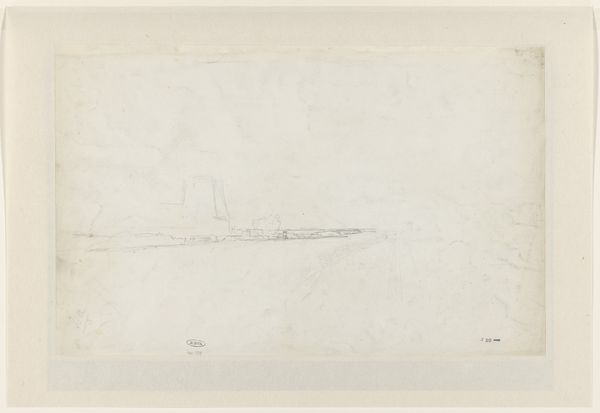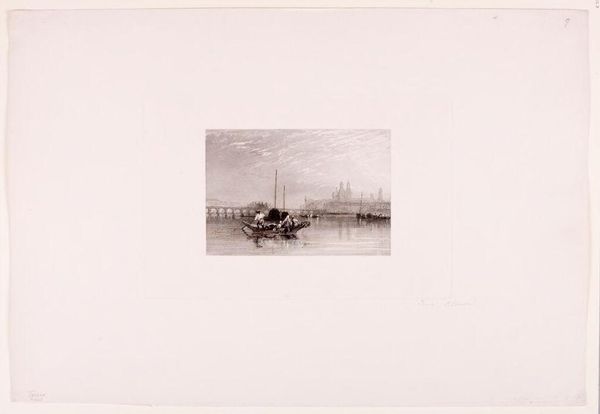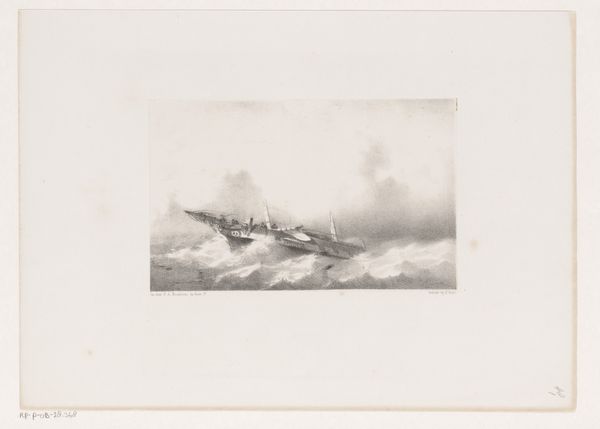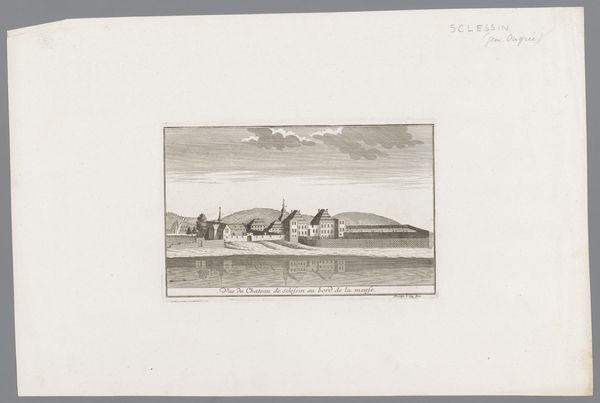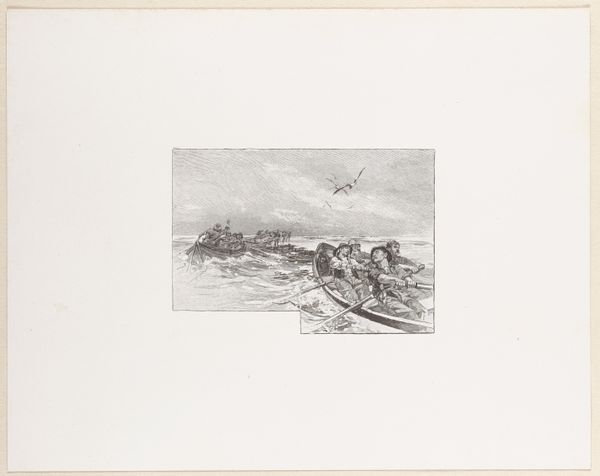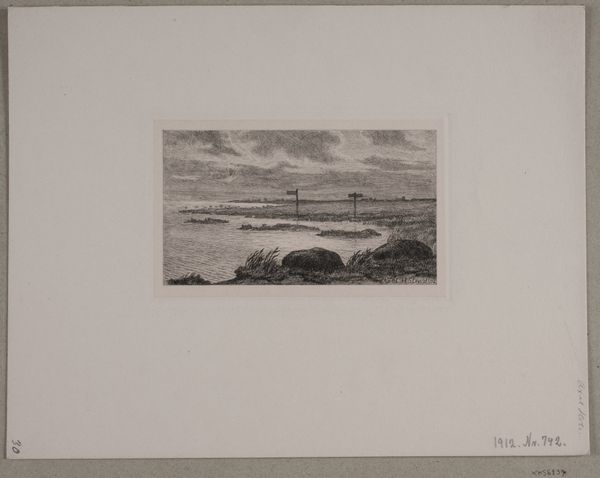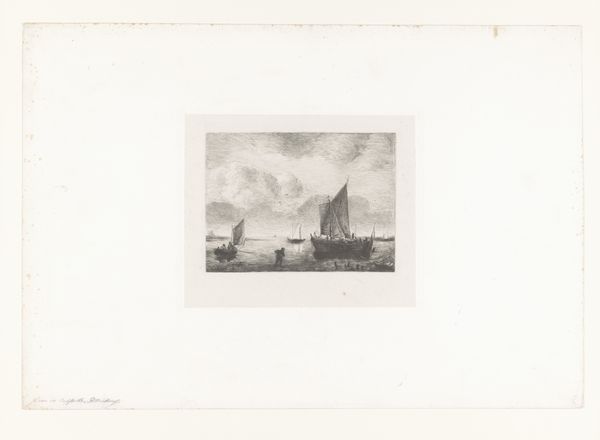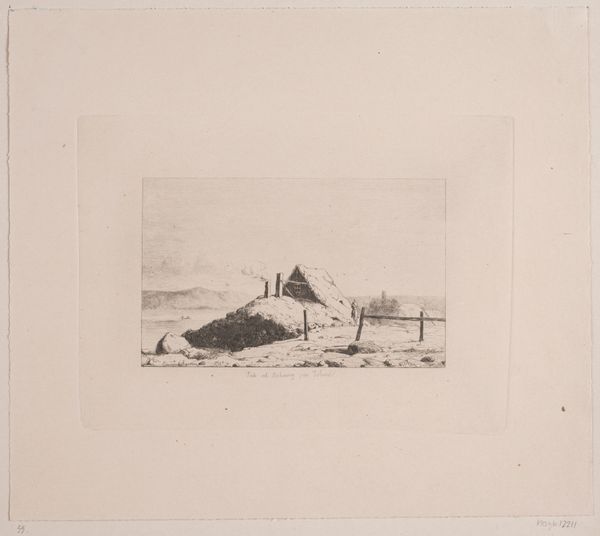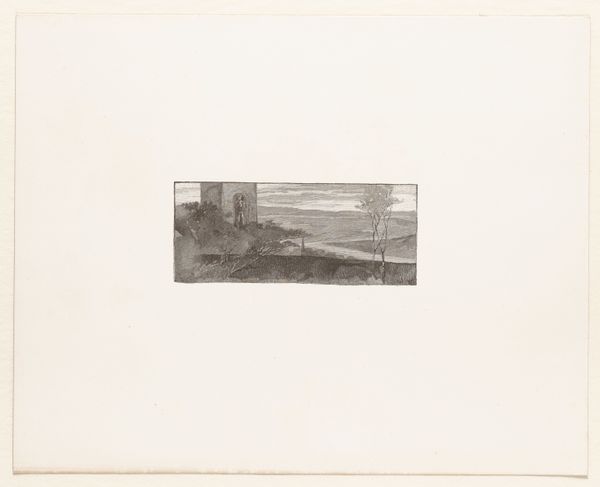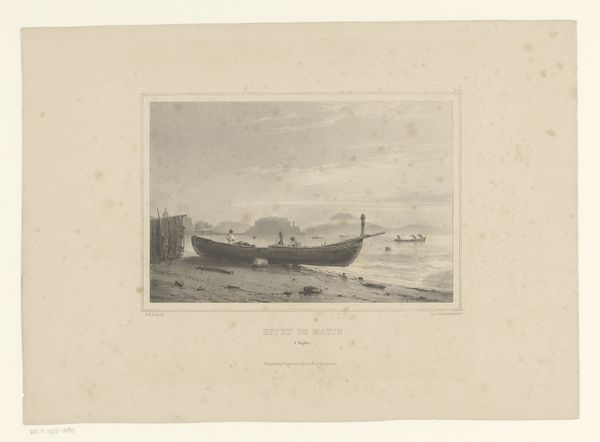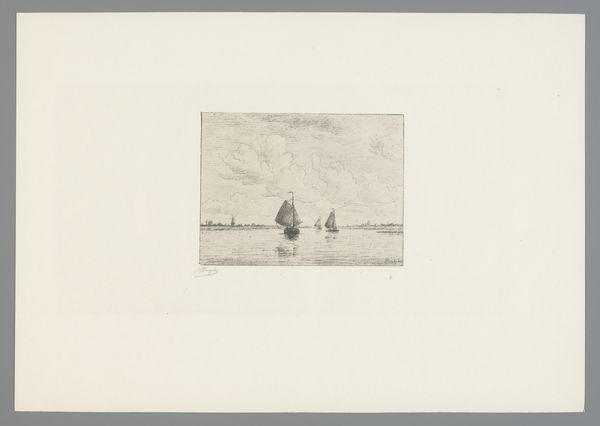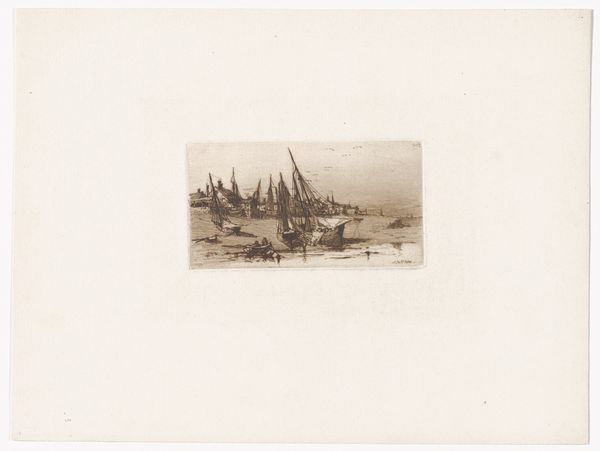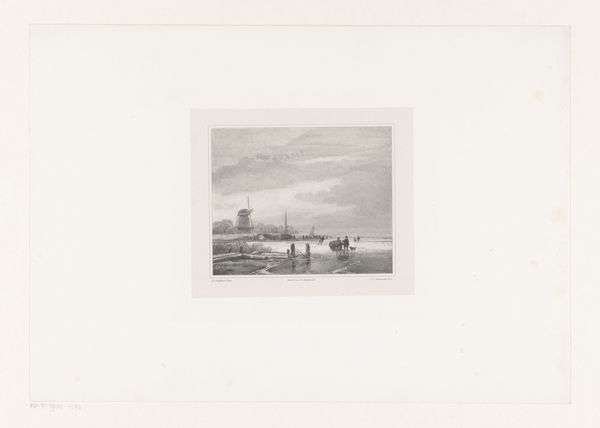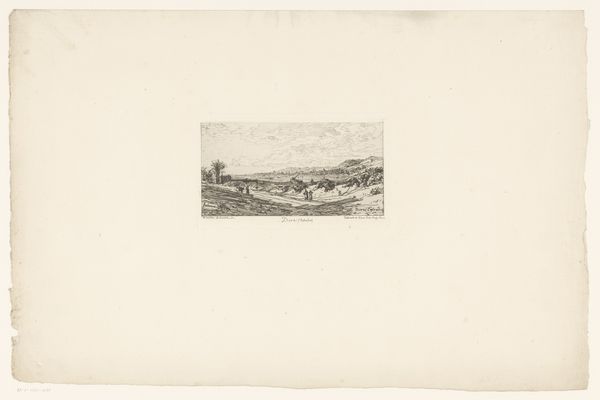
drawing, print, etching, paper, ink
#
pencil drawn
#
photo of handprinted image
#
drawing
#
ink paper printed
# print
#
etching
#
landscape
#
ancient-egyptian-art
#
paper
#
ink
#
geometric
#
pen-ink sketch
#
academic-art
#
pencil art
Dimensions: height 164 mm, width 216 mm
Copyright: Rijks Museum: Open Domain
Curator: Before us is "Opkomende Semoem (Kaïro)", or "Rising Semoem (Cairo)" in English, a 1920 etching by Philip Zilcken, now residing in the Rijksmuseum. What's your immediate reaction to it? Editor: It's subtle. I find it quite evocative. The muted tones create a serene, almost melancholic atmosphere. There's a real sense of vastness and stillness. Curator: The texture achieves an almost photo-realistic quality; if one looks at the ink on paper, the manipulation is impressive. Consider the time it took to create this print with such precision—each line carefully etched to achieve this delicate tonal range. Editor: Absolutely. The choice of subject matter combined with the medium situates it within colonial power dynamics, with a western gaze on Egyptian monuments and the labor associated. Think about the political context; Egypt was under British rule. This piece, I would argue, functions as a quiet assertion of that presence. How was this print circulated? Who was the intended audience and what kind of meaning would they have ascribed to it? Curator: We know Zilcken was working during a boom in Egyptology and tourism to Egypt by western audiences; these would likely be aimed for consumption by middle to upper class tourists and enthusiasts. Zilcken certainly demonstrates masterful use of traditional etching techniques. We can observe close parallel lines, perhaps even experimenting with the plate to capture the unique shimmer of light on water. Editor: True. While appreciating the technical skill, it's important to examine the representation and its implications. Who does it center and whose voices are muted? I would wager that the local narratives are almost nonexistent. Curator: Do you think approaching this with contemporary critique affects how we perceive the craftsmanship involved? How do we find the proper measure to interpret labor and historic conditions under scrutiny? Editor: It complicates it, undoubtedly. But it's essential. Ignoring the social and historical context diminishes the work by preventing a deeper understanding of it and erases histories. I am walking away considering these complexities. Curator: And for me, I find myself thinking about the skilled craftsmanship that speaks to both the artist’s vision and the capabilities of printmaking in that era, within broader narratives and systems. A sobering thought to keep close.
Comments
No comments
Be the first to comment and join the conversation on the ultimate creative platform.
